Column Durability, fire resistance, seismic resistance, and termite-repellent features of Japanese lumber

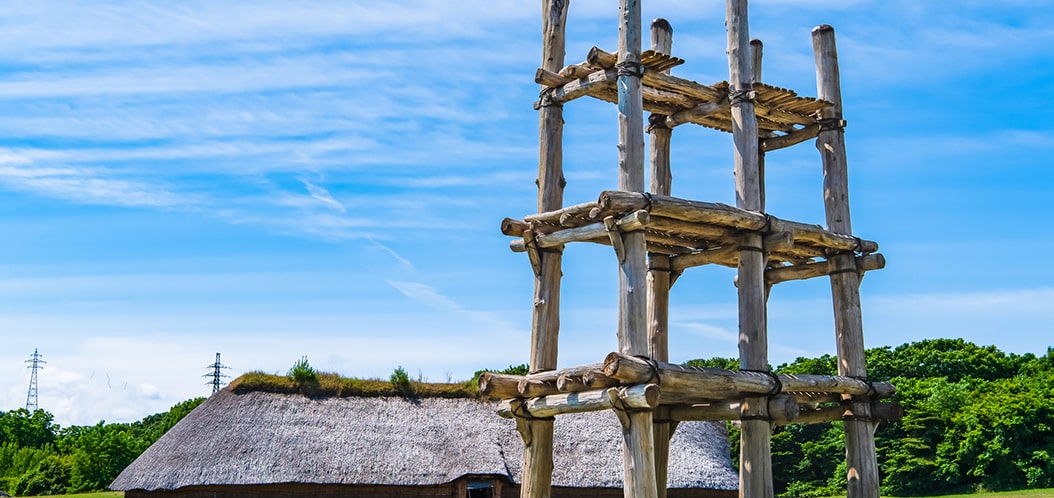
Durability, fire resistance, seismic resistance, and termite-repellent features of Japanese lumber
Japanese people have been systematically planting and using trees since the Jomon Period, approximately 5,000 years ago.
At the Sannai Maruyama Site in Aomori Prefecture, north of Japan, the original forests of “Buna” and “Mizunara” were replaced with simple forests of “Kuri (chestnut)” trees. It is believed that the Jomon people intentionally managed and cultivated Kuri trees, not only because of their delicious fruit but also because they are excellent trees for use as lumber.
As such, Japanese people have long cultivated their own forests and utilized the wood harvested in their daily lives.
In particular, after World War II, Japan suffered significant damage, and much wood was needed to rebuild the country. This led to the planting of Sugi, Hinoki, and other trees in devastated mountains, and the area of Japan’s planted forests expanded from approximately 5.7 million hectares around 1960 to more than approximately 10 million hectares around 1980.
The trees planted during that period have been maturing for 50 to 60 years, and most forests have reached the age at which they can be harvested.
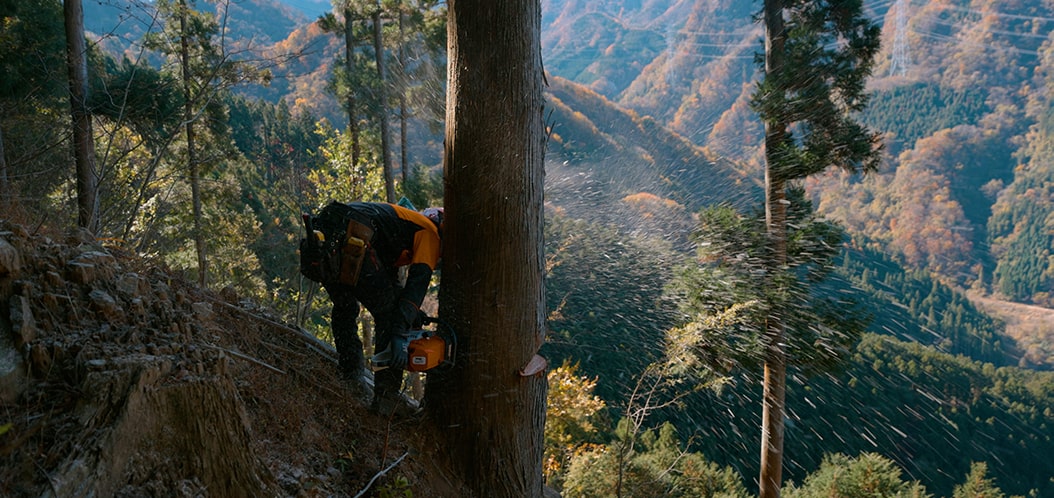
Clearing mature forests and creating new forests are also very important for the global environment. Trees absorb carbon dioxide (CO₂) from the atmosphere during their growth, contributing to the prevention of global warming.
Even after they are cut down and turned into lumber, they do not emit the carbon dioxide they have absorbed but store it inside unless they are burned. Thus, it is significant to have the harvested timber utilized in Japan and abroad.
Japan’s sophisticated wood culture has been nurtured along with these trees for generations. The export of high-value-added wood products to overseas markets by applying advanced processing technology to timber harvested in Japan is much desired.
In Japan, many wood products offer high performance due to advanced processing techniques, such as wood with excellent performance in terms of durability and fire resistance and traditional Japanese “Yakisugi (charred cedar).” Here, we introduce some of these highly processed, fire-resistant, and durable wood products.
- Durability, fire resistance, and termite-repellent measures
- High-Temperature Steam Treated Wood
- Advanced Preservation Treatment with Resins for Wood
- Nitrogen Heat Treated Wood
- Preservative and Termite-Proof Plywood for Structural Use
- Thick Structural Plywood
- Laminated Veneer Lumber (LVL)
- Fire Resistant Laminated Lumber
- Burnt Cedar Boards
- Japanese Post and Beam Construction
Durability, fire resistance, and termite-repellent measures
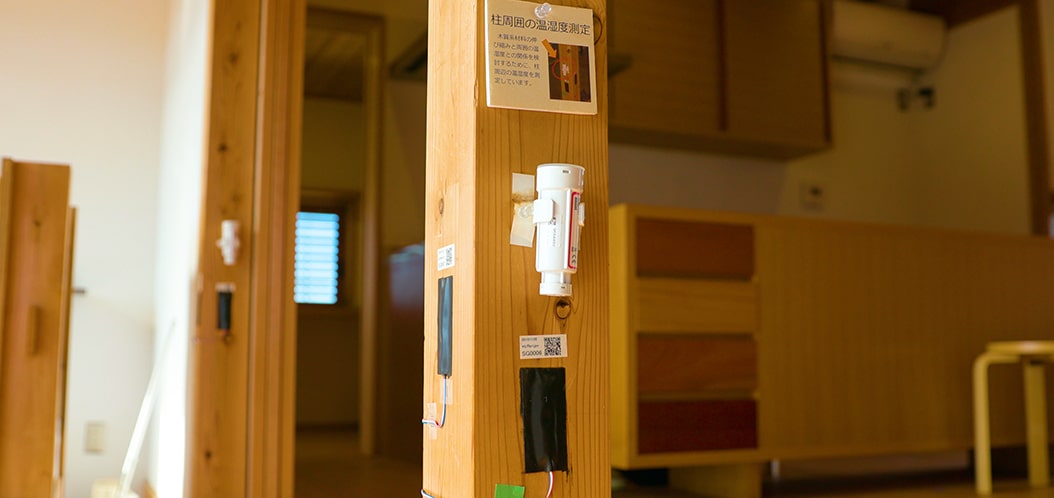
Undoubtedly the most crucial concern with wooden houses is their durability, fire resistance, and termite-repelling abilities. So, what are the durability, fire resistance, and termite-repellent features of Japanese wooden houses?
The harshest environments for houses are significant changes in temperature and humidity. When the temperature of a material increases, its volume expands; conversely, when the temperature drops, its volume decreases. When a substance contains moisture, its volume expands, and when moisture is removed, its volume decreases.
This rise and fall in the volume of an object can cause gaps and misalignments in houses, reducing durability. In addition, high humidity causes condensation, where water vapor escapes into the air and then turns back into water, creating an environment where mold and bacteria can easily grow, reducing the house’s durability.
In Japan, summer temperatures exceed 35℃ (95℉), on top of which humidity levels are extremely high. Meanwhile, Japan has an arid climate during the winter, with temperatures so low that it snows. Aditionally, from June to October, more than 20 typhoons hit Japan each year, bringing heavy rains and strong winds. Japanese housing must maintain its durability even in such an extreme environment.
It is also known throughout the world that Japan is prone to earthquakes. Earthquakes cause buildings to sway wildly, sometimes so much so that they collapse. It is impossible to predict when an earthquake will strike. Therefore, if an earthquake strikes while someone is cooking, there is a high possibility that a fire will start in the kitchen; hence Japanese houses must also be fire-resistant.

Houses in Japan cannot exist without the following three qualities: durability to withstand the rapidly changing climate and typhoons that bring strong winds and heavy rains; seismic resistance to prevent buildings from collapsing in the event of a major earthquake; and fire resistance in the event of a large-scale fire caused by an earthquake.
As a result, Japanese housing laws for fire safety and seismic resistance are among the strictest in the world. As one example, Japanese housing standards require that in the event of a fire, the house will not burn down and collapse, even in the event of the absence of firefighters.
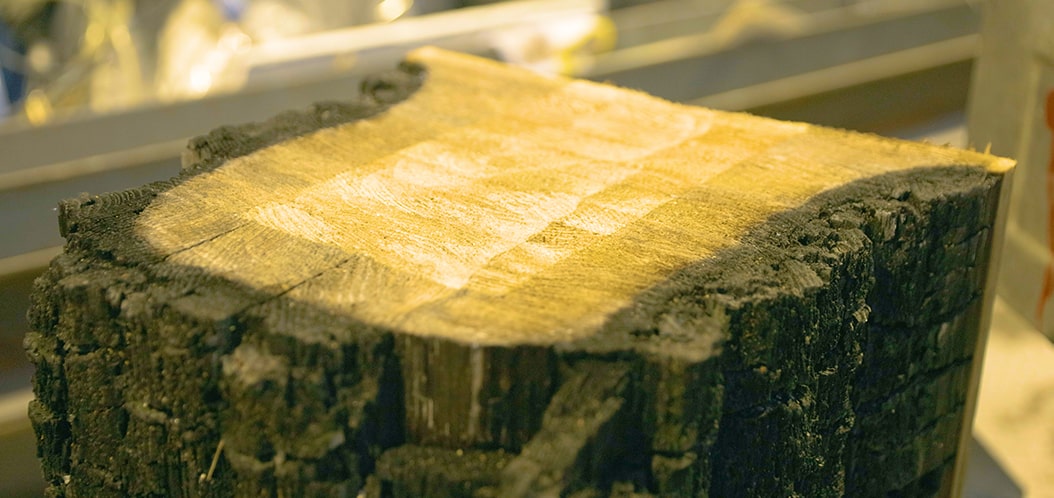
In terms of seismic resistance standards, a code stipulates that buildings in “a mid-sized earthquake with a seismic intensity [Shido scale] of upper 5 may sustain some damage, and may not collapse in a large-sized earthquake with a seismic intensity of upper 6 to 7.”
A seismic intensity of 5 is a level of shaking that causes unfixed furniture to move and makes it difficult for one to walk without holding on to something. An earthquake of seismic intensity 6 to 7 is a tremor so strong that it is difficult for one to stand; doors and windows cannot be opened due to the distortion of the building caused by the quake, and it causes roads and grounds to crack. Japanese housing must be able to withstand such conditions without collapsing.
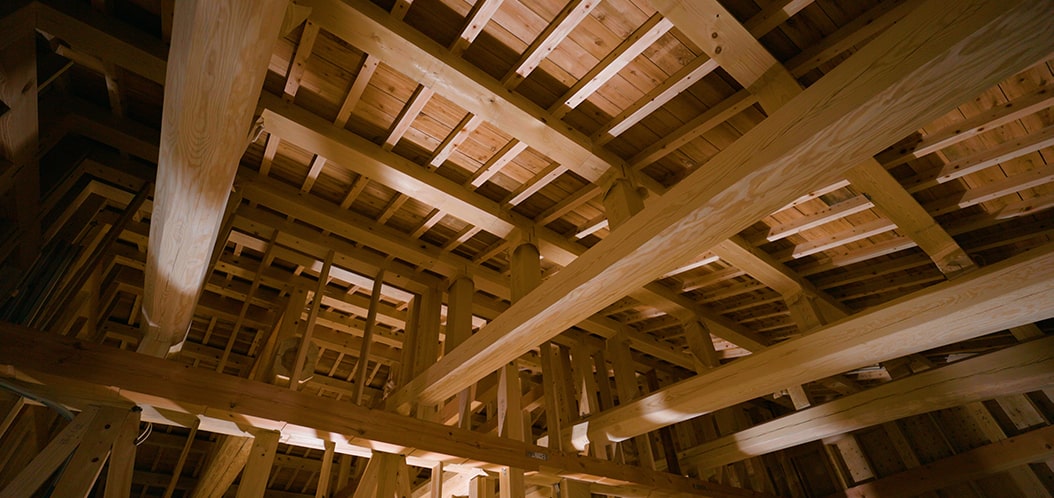
Another concern with wood construction is termite damage. Termites eat wood for food. This can cause damage to wooden buildings.
Hinoki, commonly used in Japanese housing, contains oils with a high bactericidal effect, preventing the harboring of termites, mold, and bacteria. In the case of Sugi, the wood core where water and nutrients pass during their growth is treated with a resin or pigment that contains ingredients that repel wood-decomposing bacteria and termites. This is why pillars made with a wood core are inherently resistant to termites, mold, and bacteria, similar to Hinoki.

Termites, mold, and bacteria also tend to prefer moist wood. Japanese houses are built on piles, with pillars built into the ground and a gap between the ground and the floor to improve ventilation. Therefore, they are structurally designed so that rain does not come in direct contact with the floor or other parts of the house.
Nevertheless, to prevent termites, mold, and bacteria from causing damage, Japanese building codes require that when wooden houses are constructed, the soil be treated with chemicals for termite-repellent measures. Furthermore, solvents that keep termites, mold, and bacteria away are soaked into the wood itself, and these are used as building materials to provide additional termite and preservative control.
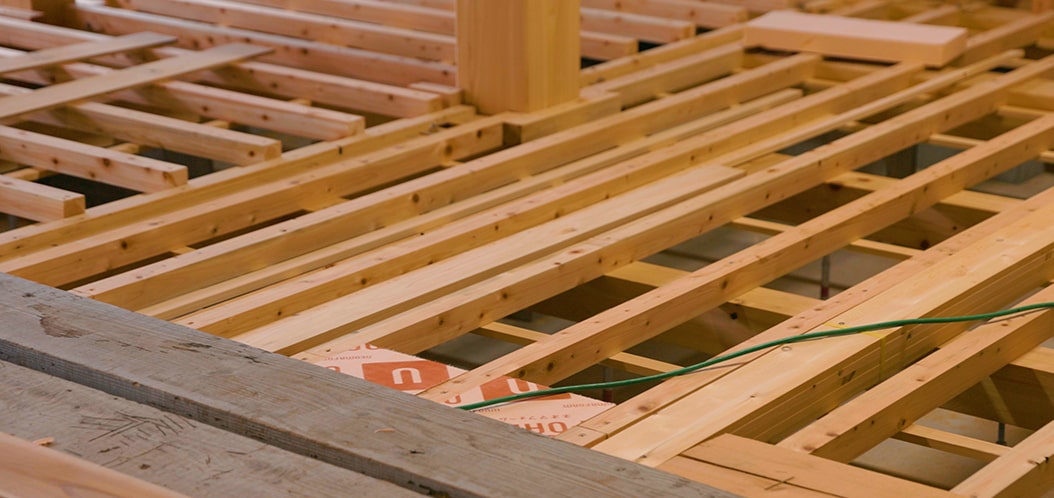
Hence, Japanese wooden structures are built with advanced technology and wood processing techniques to meet strict durability, fire resistance, and seismic resistance standards. Additionally, thorough measures are taken to prevent termites, mold, bacteria, and other factors that can erode and decompose the lumber.
High-Temperature Steam Treated Wood
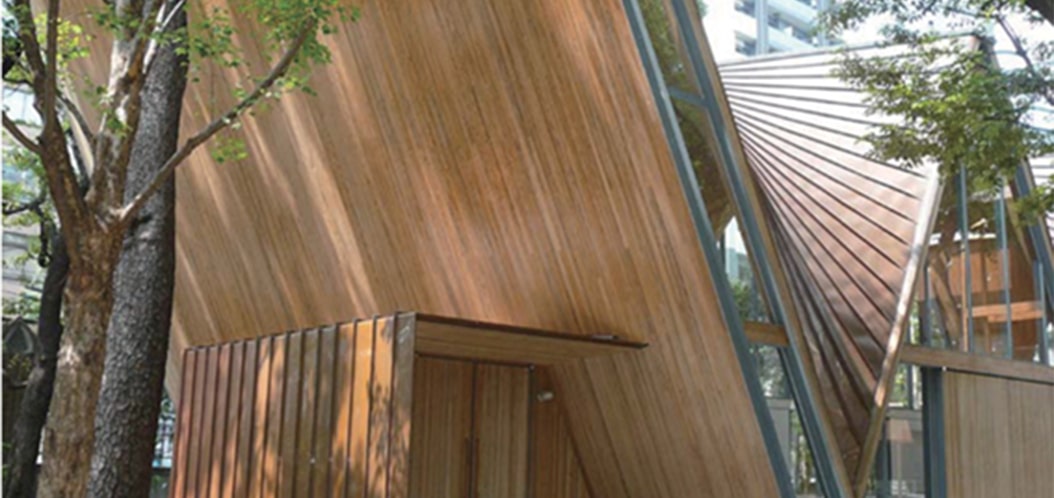
The heat treatment technology, which improves durability and dimensional stability by heating wood, was developed in Finland, a country of forests and water. Applying the Finnish technology in Japan, we have improved it to a new heat treatment technology called Steam Treated High-Temperature Wood Drying Technology to produce higher quality wood. Using only "heat" and "water" but no preservatives at all as a precondition, we have successfully developed the technology that makes the most of the performance of wood, while maintaining its natural colors. Born in this way, Japanese Thermo-Wood is an innovative and environmentally-conscious material made out of wood, of which quality is maximized.
The technology of Thermo-Wood permits high durability and dimensional stability, no matter where the origins of the wood are nor what species they are. By using local materials, more optimized products to the climate of each region can be produced at a lower cost.
Thermo-Wood is a safe product that does not use any preservatives at all, which is equivalent to solid wood. Therefore, it can be recycled, reuse or utilization as fuel, after using it.
Since Thermo-Wood has low water absorbency in spite of its low moisture content, it has high antiseptic performance and is very strong against fungi that can decay wood. Therefore, it is ideal for outdoor use.

Thermo-Wood, which is created by the high-temperature wood drying technology, has outstanding dimensional stability. It is suitable for use on visible areas such as exterior walls and fences. It is economical, as it requires merely the minimum maintenance, which means fewer running costs than that for untreated wood.
Advanced Preservation Treatment with Resins for Wood
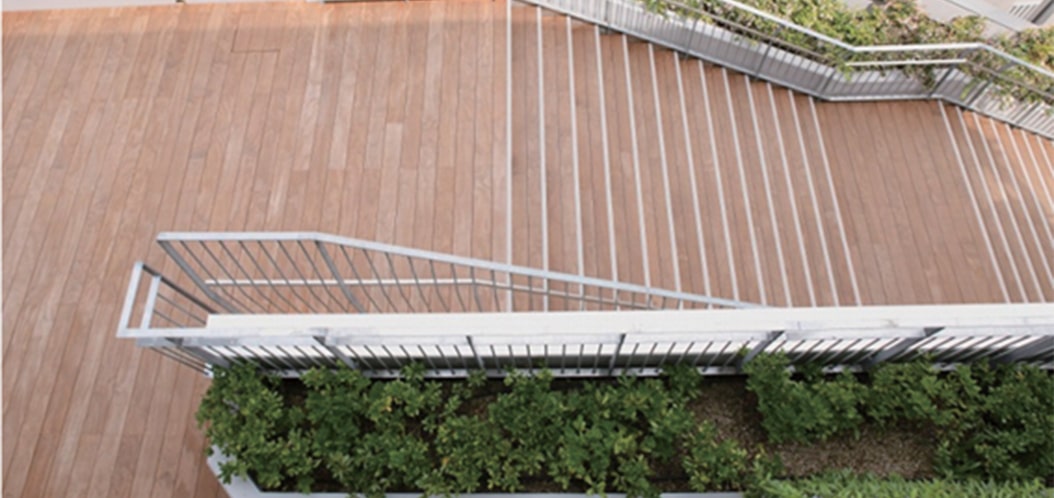
Wood decks have become familiar in such areas as housing, public facilities, large commercial facilities, and so on. Their cost performance, however, has been an issue, as repair and exchange cycles are short due to aging such as decay, termite damage, warps, and cracks. The major cause for these is that the treatment for enhancing the durability was only effective for the surface of the materials. Through persist research to develop wood decks with uniform performance of high durability all the way to the inside, they put a product named Maxelum into practical applications, owing to the joint project of the Kyoto University Wood Research Institute and a manufacturer. The advanced preservation technology with resins can infiltrate a special resin that observes the strict regulations into not only the surface but also the inside of wood with a specialized autoclave. Extreme durability and safety are actualized with the new technology, unlike conventional wood decks.
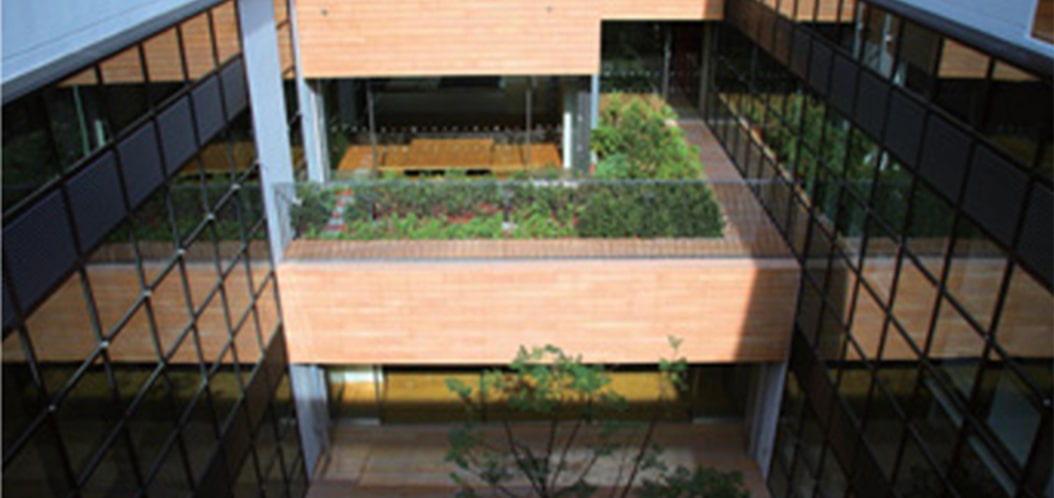
Maxelum, treated with the advanced preservation technology with resins, can suppress proliferation of decay fungi. The technology changes materials to what termites do not prefer so that insect damage hardly occurs. As the materials are laminated after veneers are treated with the resin all over to the inside, it has uniform quality no matter where you cut it, and preservative treatment on the section surfaces is unnecessary.
The special resin treatment adds the water absorption suppression effect. With extremely-smalldimensional changes and fewer warping and cracking, it is highly durable that can cope with severe outdoor weather. Maxelum can be used for various exterior purposes including outdoor wood decks, boardwalks, flooring, waterfront, poolside, benches, playground equipment, pergolas, guide boards, and garden furniture.

Maxelum found no noticeable degradation or damage caused by decay fungi, termites, and others after being left in the soil for 11 years, unlike its untreated counterparts. The experiments have proven that Maxelum, infiltrated with the special resin all the way to the wood core, can maintain high durability even when buried in the soil for a long period of time.
Nitrogen Heat Treated Wood

The nitrogen heat treatment (S-Tech treatment) technology is attracting interest among those technologies which heat and dry wood to improve its performance. It decomposes perishable components of wood with nitrogen heating above 200 degrees Celsius. This stabilizes the shape of the materials and reduces their weight. The durability has dramatically improved compared with the conventional wood. It boasts a durability record exceeding 20 years even in applications for promenades.
The S-Tech treatment executes sterilization and insecticide along with the drying process. The effect is sustained for a long time to keep nutrients and moisture at a low level (3% to 7% of equilibrium moisture content) that fungi and termites cannot approach. There is no danger of harmful substances to evaporate, as it is non-chemical preservation with no use of highly toxic chemicals at all.
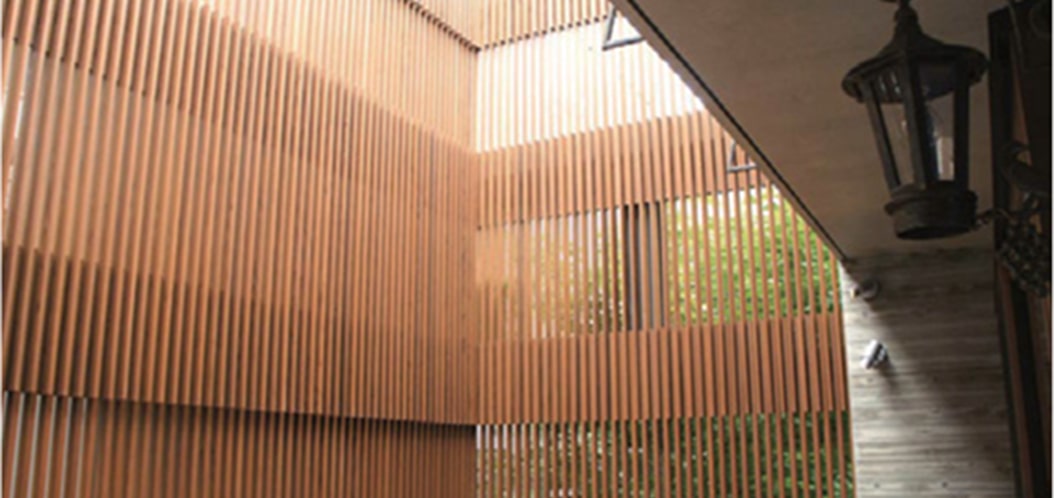
The S-Tech treatment reduces the moisture content and weight of the materials, as well as it changes the cellular structure of the wood to porous. This increases the insulation effect and lowers the radiant heat, making it a suitable material for exterior applications such as wood decks, louvers, fences, outer walls, and so on. In addition, since its permeability of oil paints is about 1.5 to 2 times that of ordinary dried wood, the effects of wood protective paints can be sustained for a long time to retard fading. Furthermore, the modification of hemicellulose keeps moisture, dew condensation, and the like away, resulting in few shrinkage and warps due to moisture. It performs high dimensional stability as well as heat retention effects for heated floors.
The S-Tech treatment removes resins. Therefore, resins do not come out on the surface after construction, or brown water does not leach out to soil the surrounding after rain soak.
Preservative and Termite-Proof Plywood for Structural Use
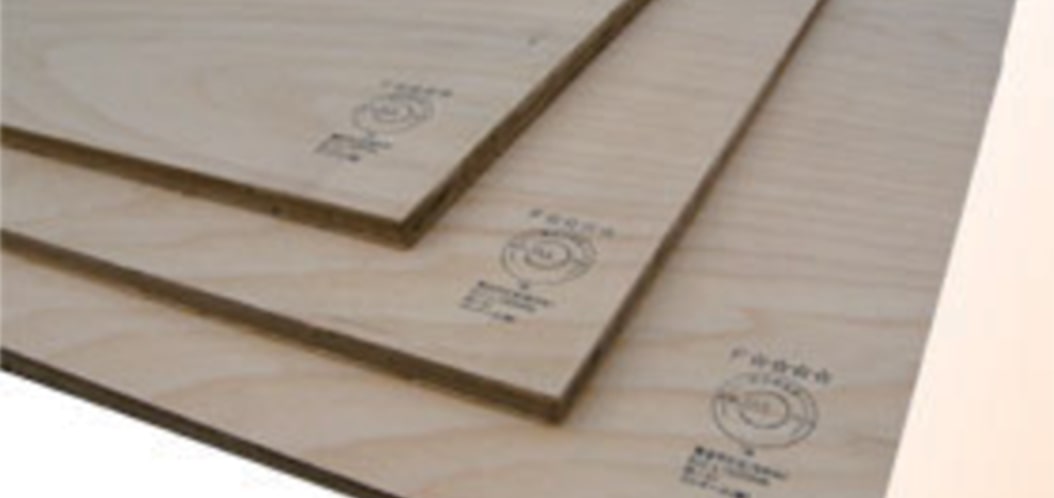
As environmental issues are more concerned today, the "stock-oriented" housing that people can live for a long period of time is preferred, rather than the housing production as before that repeats knocking down and starting again to give a large burden on the environments. Japan has started to spread high-quality long-life housing, so-called "Superior Super-Long-Life Housing." The new housing policy extends the "average life expectancy" of houses for enriched living circumstances. It is preservative and termite-proof plywood for structural use that is playing an important role. The advanced preservative and anti-termite treatment on plywood for essential structural parts including floors, walls, and roofs prevents the building from decaying and extends the life of the houses. Deterioration can be sufficiently averted by applying plywood with high durability as the sheathing materials of exterior walls,ground floor, and wet areas which are especially difficult to maintain. It will serve as the basis for protecting houses with high asset value.
The pressurized injection processing performs preservative treatment on veneers before they are bonded into plywood. In a special tank with high pressure, the preservatives are applied in the wood to penetrate deeply into the inside, not only the surface. Its preservative and anti-termite performance is higher than the conventional treatment, which the preservatives are mixed in the adhesive, achieving the highest effect among the wood preservation processing technologies.
Thick Structural Plywood
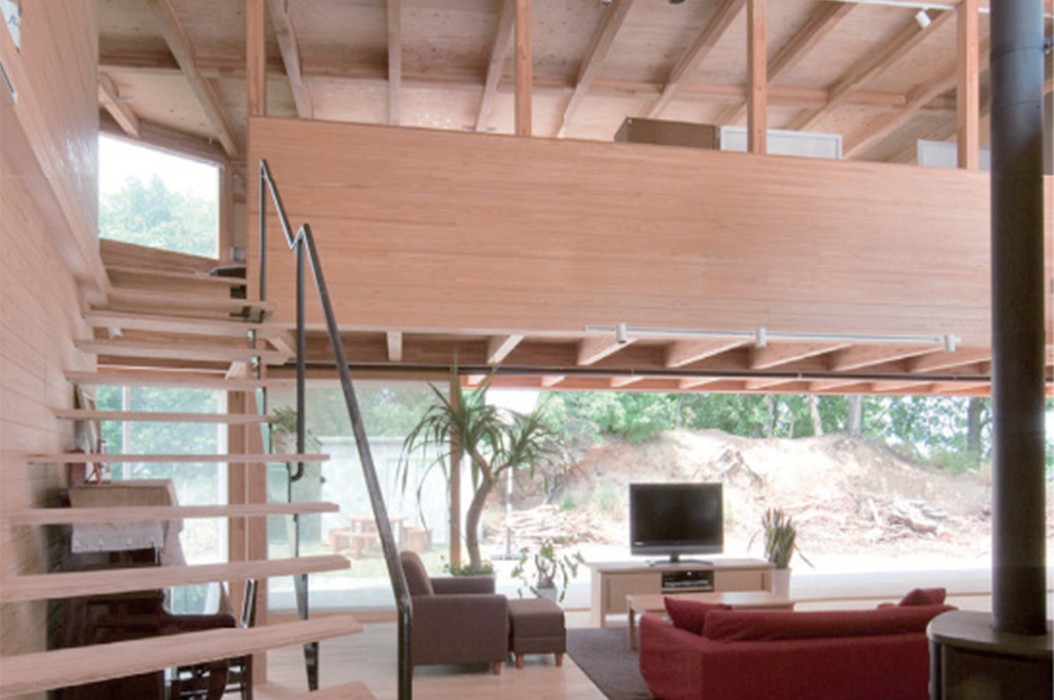
Nedanon is structural plywood with thicknesses of 24mm and 28mm, which are far thicker than those of conventional items. Main species for this item are Japanese wood such as cedar, larch and cypress. At present, Nedanon is used as the sheathing material of the floor of most Japanese timber houses. By using this item, the structural performance of the f loor and thus the building itself has tremendously improved. Production of Nedanon was less than 1% of the national production of plywood in 2000, but in 2016, it accounted for about 38% (approximately 1,160,000 cubic meters).
The seismic-resistance of Nedanon-floor is more than four times higher than conventional floor which is sheathed with 12mm thick plywood. Not only for the floor, Nedanon is also available for roofs and walls, which makes the houses extremely high seismic resistant. When you build a house, you nail Nedanon with 75mm long nails at between 100mm and 150mm spacings. If you use more nails, for instance, at an spacing of 50mm in two rows, you could design extremely high quake-resistant structural subassemblies (floors, walls, roofs). In Japan, middle and large scale timber buildings are being built with those structural subassemblies with high capacities.
Compared with conventional floor, the sound insulation performance of Nedanon-floor is higher and has less warps and no trouble of floor squeaks. As Nedanon is thick, it is highly fire-resistant, which allows the residents a time-rich evacuation when a fire occurs. This product has obtained the certification for quasi-fire-resistance, so, there are some advantages in designing the floor for apartment houses.
Nedanon, after used in houses and when the houses are demolished, becomes the material for particle boards and others. At the end of the products’ life, they are used for heat source and power generation as biomass energy.
Laminated Veneer Lumber (LVL)
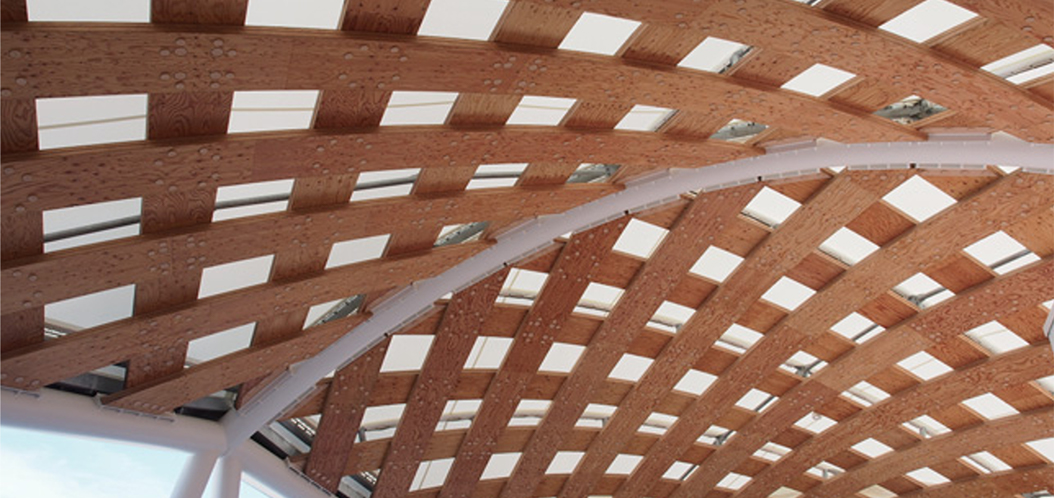
LVL is laminated Veneer Lumber. To manufacture LVL, we first make 2-4mm thick veneer from logs by a machine called veneer lathe and dry them, which then are layered and glued in parallel to their fiber direction. Plywood is used mainly for sheathing materials, whereas LVL can be used as long components (framing materials) such as posts and beams. In addition, the productivity of this item is high, because almost all parts of its manufacturing processes can be automated.
By jointing veneer sheets lengthwise, we can easily manufacture long lumber even from small-diameter logs, warped logs, and short logs such as thinned wood. By adjusting the number of laminated veneer sheets, we can make items in any thicknesses which are suitable for your purposes. We can also remanufacture (cut) the products in requested width and length.
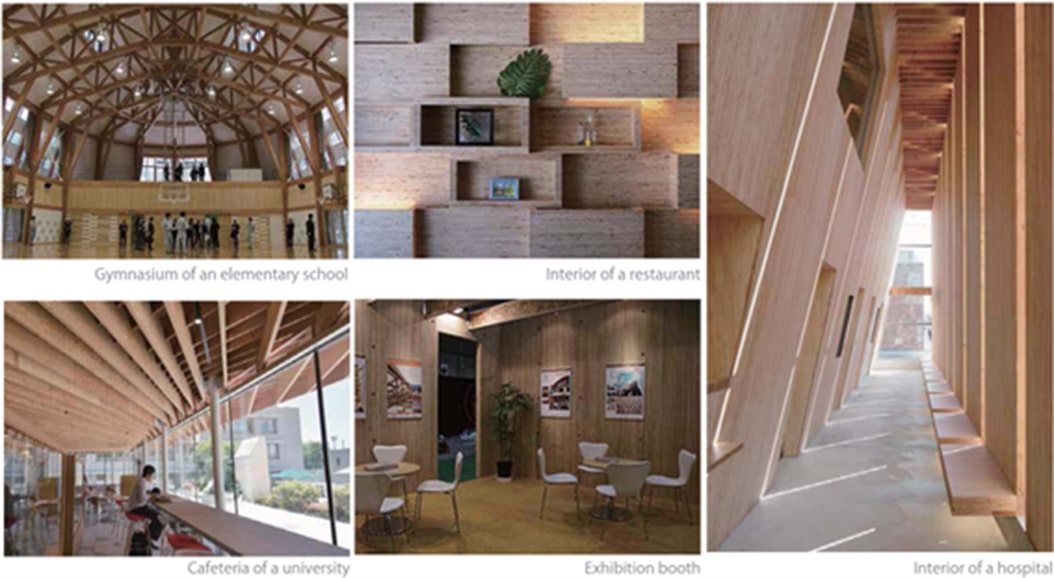
LVL are used in many ways from structural lumber to interior material. It can be used for timber houses (structural and nonstructural uses), industrial buildings (warehouses, gymnasiums, bridges, livestock barns), fittings (doors, window frames, blinds), cars (decks of trucks, and busses), transportation (pallets, packaging, containers), railroads (ties), makeshift facilities (scaffold planks), airplanes (interior), electric parts (household appliance, insulating materials), kitchen goods (cut boards, dishes and bowls, handles of kitchen tools), interior decoration (clocks, ornaments), stationery (writing utensils, chisels), sporting equipment (rackets, golf goods), and musical instruments (pianos, organs, guitars) etc.
Fire Resistant Laminated Lumber
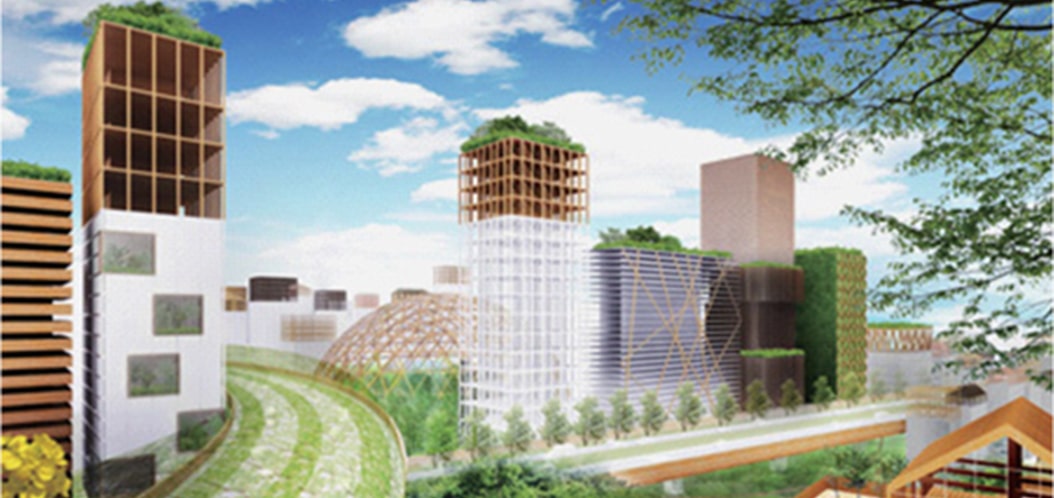
In Japan, fire resistant laminated lumber items, which are gypsum covered or hybrids of wood and steel, have been developed. FR Wood® is pure wood fire resistant structural lumber made of cedar only. The structural laminated wood, which is located at the center of FR Wood®, is surrounded with wooden layers injected with fire-retardant chemicals. This product enabled us to construct fire resistant timber buildings having the texture of real woody surfaces. FR Wood® can create a space with a warm tone of wood.
Up until now, we have secured the fire resistance by covering wood with non-combustible materials such as gypsum boards when we build wooden f ire-resistant buildings. However, this posed a dilemma, “wood is invisible though it is wooden structure”. To solve this problem, universities, institutes and companies jointly developed a new technology product “ FR Wood®”. With this technology, the fire won’t progress inside the load supporting parts (posts and beams), because they are surrounded by f ire-stop layers which are injected with f ire-retardant chemicals.
According to the conditions, you can design the cross sections freely from small to large. If the required size is larger than the smallest cross section size*, any cross sectional design is available, which will meet your needs more than before.

To establish a fire-resistant building, the connections between fire-resistant floor, walls and ceilings are the key. As FR Wood® is a pure wooden component, joint parts and connecting parts can easily be assembled, which allows the construction the same as the one with conventional wood working.
Burnt Cedar Boards
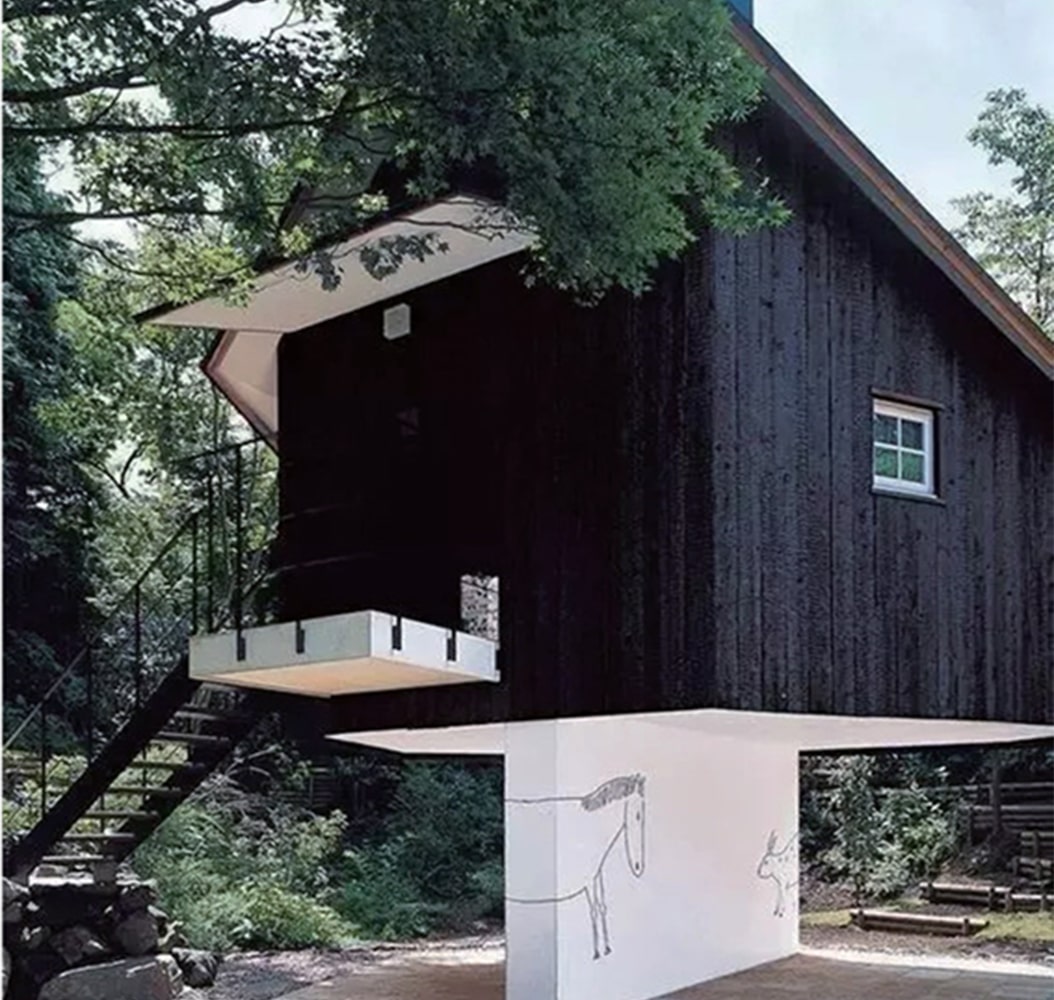
Burnt cedar boards of which surfaces are burned and carbonized are Japanese traditional siding materials. Formerly, those walls were seen in houses of various statuses from samurai and aristocracy to commoners. And at present, they are still alive. They have become popular even outside Japan, because of their weather-resistance and durability, the unique blackish color, and the architectural design.
To improve the durability, we usually coat wood or inject it with chemicals, but burnt cedar boards are just burnt on the surface. As the surface is carbonized and protected, they are preservative even without coating, and their insect-resistance is high. They require no maintenance for a long time.

With the air layers, the weight of burnt cedar boards is light, which reduces the dead loads on the building frame, and improves the thermal insulation performance and the f ire-resistance performance of the building. This item is a material for exterior walls with functionality and beauty.
According to the manufacturing techniques, there are various types of burnt cedar boards.
Japanese Post and Beam Construction
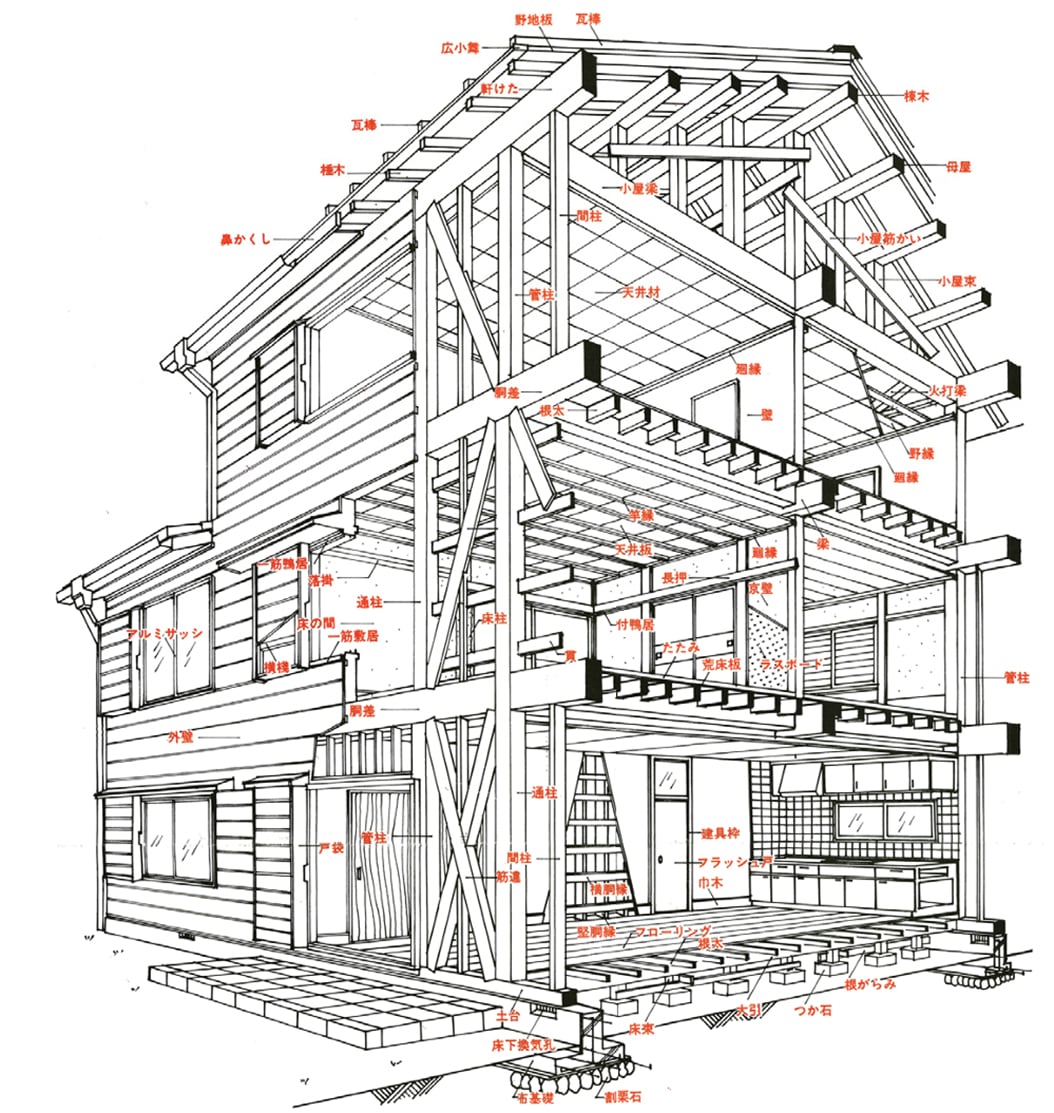
Japanese post and beam construction is the most popular structural system among the timber buildings in Japan and originated from the traditional timber building technique. The main frames are sills, posts, beams and girders. Let-in-corner braces are the member to resist to horizontal loads such as wind and seismic loads. Recently, plywood is beginning to be used instead of braces. In general, Japanese post and beam construction has more flexibility of structural and architectural design than the other structural systems. Room layout, big openings and wood surfaces to show in the room are the examples. In the past, a skilled-craft work was essential to cut the structural members including the caved connection parts, which required several months before the construction. But now, lumber is precut in factories by using so-called “ Precutting systems” with CAD (Computer Aided Design) and CAM (Computer Aided Manufacturing), which has shortened the total production period of buildings. The connections are reinforced by using metal plates, bolts and screws. With various measures like them, we are trying to shorten the construction period, increase the durability, and improve the seismic resistance.
Column
-

Introduction: Japan’s land and its wood culture
-
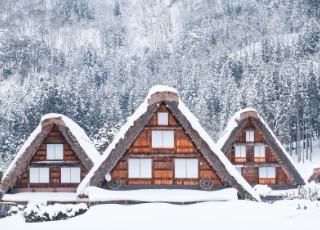
Traditional Japanese wooden homes that can withstand severe climates and earthquakes
-
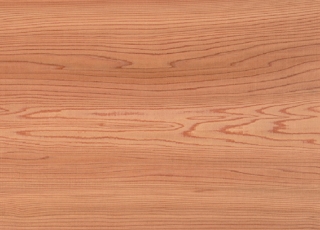
Features of Japanese trees and timber
-
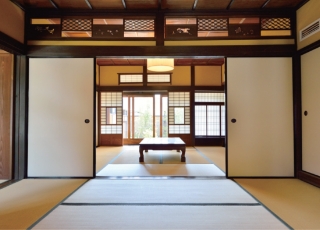
Features of Japanese homes and wooden furniture
-
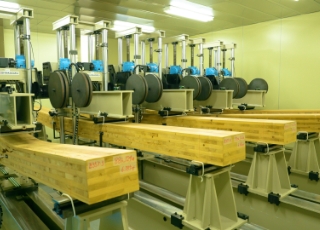
Durability, fire resistance, seismic resistance, and termite-repellent features of Japanese lumber
-
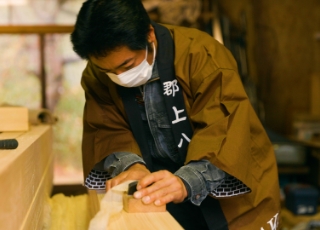
Traditional Japanese woodworking techniques
-
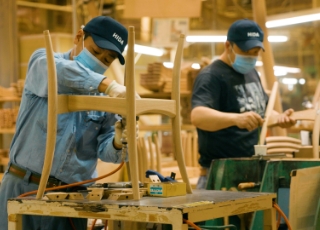
Modern Japanese woodworking techniques

